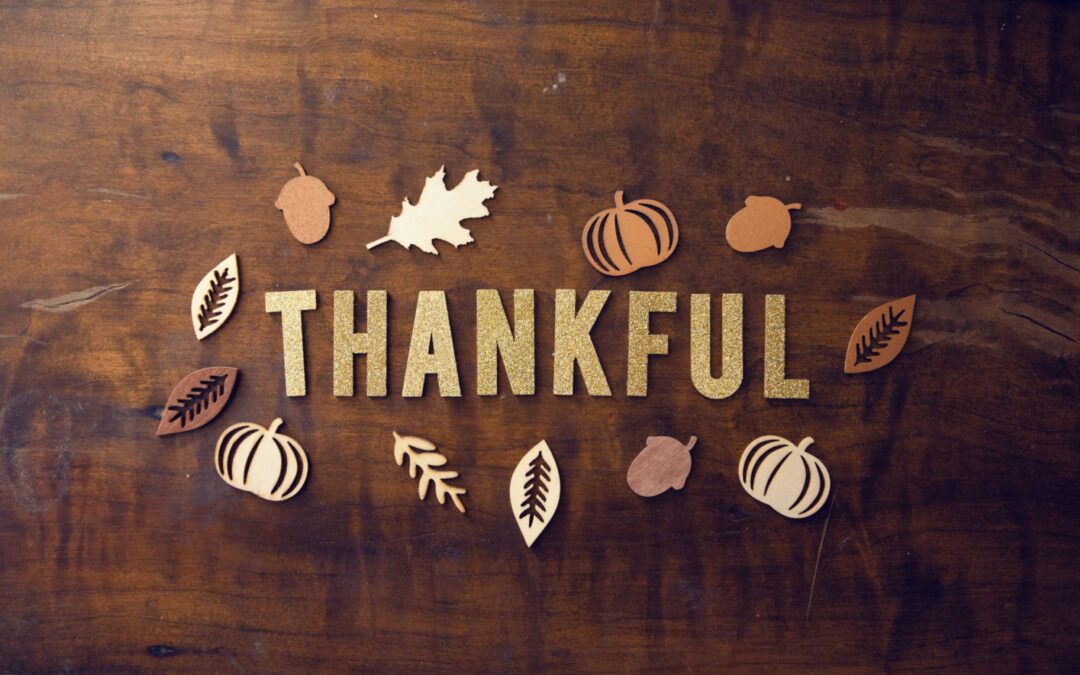It is Thanksgiving weekend coming up. This is a time we often talk about gratitude, and it is a good time to do so! The government gives us a day off work, and we have an opportunity to enjoy the spectacular autumn weather. Why am I talking about this as a chiropractor? Look at the posture of the grateful person in this picture! What a wonderful treatment for text neck! Even if we don’t get fantastic fall weather on the weekend (I think there may be some rain in the forecast), we will enjoy the long weekend if we have a gratitude focus. For Jane and I, our kids are coming home from University, and we will be together with extended family. All good things! As I have said in previous articles, gratitude and health are closely connected.
Studies show a great benefit to one’s health by having a gratitude focus. A 2003 study by Emmons and McCullough found that participants keeping a gratitude journal had 16% less physical symptoms, 19% spent more time exercising, 8% enjoyed more sleep and 25% experienced increased sleep quality. Seligman (et al) found in 2005 that expressing gratitude reduced depressive symptoms by 35%.
A study was done in 2016 by Pratnik Kini (et al). A group of subjects were to write regular letters of gratitude compared to a control group that did not. The “study found that a simple gratitude writing intervention was associated with significantly greater and lasting neural sensitivity to gratitude – subjects who participated in gratitude letter writing showed both behavioral increases in gratitude and significantly greater neural modulation by gratitude in the medial prefrontal cortex three months later.” This was visible during functional MRI scans! As an aging population, we are all looking for more neural plasticity these days!
The study mentions “behavioural increases in gratitude.” I have noticed that when gratitude is connected to service, the benefits of gratitude are magnified. When we are outward focused instead of self focused, we will be healthier. According to the Corporation for National & Community Service, “Research demonstrates that volunteering leads to better health.” A study by Brown (et al) in 2005 showed that those who gave social support to others had lower rates of mortality than those who did not. Volunteer activities can strengthen the social ties that protect individuals from isolation during difficult times, while the experience of helping others leads to a sense of greater self-worth and trust. A study in 2002 showed individuals suffering from chronic pain experienced declines in their pain intensity and decreased levels of disability and depression when they began to serve as peer volunteers for others also suffering from chronic pain. (Arnstein et al., 2002).
When we have a gratitude focus, we see a health benefit. When that gratitude focus leads us to serve others, I believe that benefit increases. When we volunteer, we can give our time, our energy and our money. When this is done from a place of gratitude, we enjoy the experience more and our health reflects this.
There are a multitude of areas in which we can serve. It is helpful to choose an area that we personally enjoy and have something to offer. I like kids and have some experience with them. I volunteer my time teaching 40 preteens in a class on Sundays at church- organizing monthly activities for them and taking them to a summer camp in Maine. My own kids haven’t been preteens for 10 years, but I still work with this age group. They keep me on my toes, and that keeps me young!
Jane and I joined the RIDE for Refuge this past weekend- getting exercise and raising funds and awareness for HOPE Worldwide of Canada, an organization that offers programs for the homeless and disadvantaged in the city.
I share these two examples of volunteerism, not to “blow my own horn”, but to illustrate that gratitude can lead to action. I am grateful for the mentors I had in my life growing up, and my gratitude leads me to want to provide that for others. I am grateful for the home I have and the freedoms I enjoy, and this leads me to want to support others who do not have as many opportunities.
This weekend, as we celebrate thanksgiving, I encourage you to take some time to exercise your “gratitude muscles”. Make a list of the things for which you are grateful. Share your gratitude list with others. If you want to see even greater gains from practicing gratitude, plan some ways you can volunteer or serve in response to that gratitude. Help at a soup kitchen or the Food Bank. Rake the leaves for an elderly neighbor. (I was going to make a joke that I’d better not see you raking my leaves in response to this article, I’m only 55 years old! On the other hand, far be it from me to stop you from getting some exercise and fresh air- just make sure you stretch first!) When someone makes you a wonderful meal, you can tell them “thank you”. But when you do the dishes for them, or even just take time to write a card, you are really expressing your gratitude with action. We have been given a lot in our society, but we can “pay it forward” and give to others as we’ve been given to.

